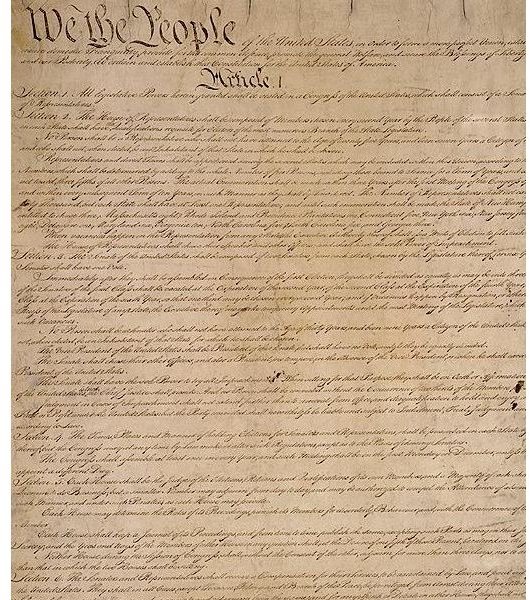The US Constitution for Students: A Summary of the Articles, Amendments, and Bill of Rights
Don’t Let the Constitution Overwhelm You
_
“We the People of the United States, in Order to form a more perfect Union, establish Justice, insure domestic Tranquility, provide for the common defense, promote the general Welfare, and secure the Blessings of Liberty to ourselves and our Posterity, do ordain and establish this Constitution for the United States of America.” (Preamble to the US Constitution)
Written over 200 years ago, the Constitution of the United States of America remains as the basic foundation of American law, and one of the most influential legal documents ever created. Below, you will find a series of articles dedicated to understanding the US Constitution. For kids, understanding a document of this magnitude may seem like an overwhelming task. What you will find, however, is that each portion of our Constitution was developed with a specific purpose in mind. Ultimately, that purpose is to accomplish what is laid out in the Preamble, as seen above.
Use this guide to delve deeper into the Constitution and its impact on American government and society as we know it today.
A General Overview and Interesting Facts
We begin with general background information about the Constitution and why it was formed. When the Federal Convention met in Philadelphia on May 14, 1787, to revise the Articles of Confederation, it became apparent that a better course of action would be to draft an entirely new frame of government. The resulting legal document was adopted on September 17, 1787, and eventually ratified at conventions in each of the United States.
- An Overview of United States Government
- Understanding Why the Constitution Was Created
- The Great Compromise of the US Constitution
- Facts About the Constitution
- Unusual Facts About the Constitution
- Full Text of the US Constitution
The Articles
In all, there are seven articles of the US Constitution. The first three establish the foundation of our national government. It divides the government into three “branches” — legislative (a bicameral congress), executive (led by a president) and judicial (a system of courts led by the Supreme Court). The other four articles provide details about the states, the process of amending the Constitution, the legal status of the Constitution, and ratification.
- Summary of Article 1 — The Legislative Branch
- Explanation of Article 2 — The Executive Branch
- History of Electoral Votes
- Understanding Article 3 — The Judicial Branch
- Describing the Three Branches of Government
- Analysis of Articles 4-7
Constitutional Amendments
The Constitution is known as a “living document.” This means that the framers included provisions that would allow the Constitution to be adapted and remain current as society grows and changes. Those provisions include various methods by which the Constitution and its laws can be modified as the need arises.
To date, there have been 27 amendments, or changes, to the US Constitution. The articles below provide a general summary of the 27 amendments, as well as a detailed look at two specific amendments — the 13th and the 19th. The 13th Amendment was adopted in 1865 and abolished slavery. The 19th Amendment was adopted in 1920 and establishes women’s right to vote. Each contributed to the realization of the statement that “all men are created equal,” which is found in the 1776 Declaration of Independence.
- A Summary of the 27 Amendments to the US Constitution
- Understanding the First Amendment
- Who Created the 13th Amendment?
- The History of the 13th Amendment
- Background to the 19th Amendment
The Bill of Rights
Together, the first 10 amendments to the Constitution are referred to as the Bill of Rights. They were part of a compromise to the Constitution as it was originally written, and they were ratified simultaneously by 1791.
Adopting the Constitution was no easy task. It was heavily debated, by both those drafting it and the states charged with ratifying it. Opponents were concerned with the potential for a new central government to lean toward the same tyranny and violation of citizens’ individual rights the US experienced while under British law. As a result, the Bill of Rights carries amendments that serve to protect individual rights against government intrusion.
- History of the Bill of Rights
- A Summary of the Bill of Rights
- Why Were the Bill of Rights Important?
- Analysis of the Bill of Rights
Using the Constitution in the Classroom
Here are a few ideas for teaching the US Constitution for kids in the classroom. Included is a lesson plan which may be used in the elementary classroom, a lesson plan on the three branches of government in the United States, and even an Internet WebQuest that students can complete on their own or in small cooperative groups. .
- An Elementary Lesson Plan for Constitution Day
- Let’s Learn About the Preamble: A WebQuest
- Lesson Plan on the Branches of Government
References
- The Constitution (Official Site), http://www.archives.gov/exhibits/charters/constitution.html
- Constitution Facts, http://www.constitutionfacts.com/
- Legal Information Institute, http://www.law.cornell.edu/constitution/
